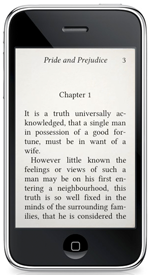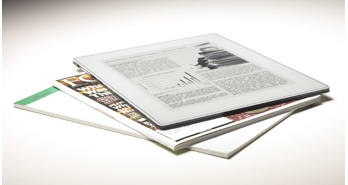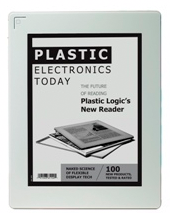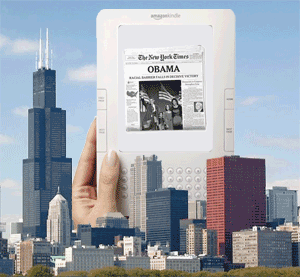 Eucalyptus is an iPhone application that that lets you download and read books from the expansive Project Gutenberg library of free public-domain works. Judging from its Web site, it’s more or less comparable to Amazon’s Kindle application–except all the content is free, and the interface looks to be prettier. The asking price is $9.99–steep for an iPhone program, but I’m tempted.
Eucalyptus is an iPhone application that that lets you download and read books from the expansive Project Gutenberg library of free public-domain works. Judging from its Web site, it’s more or less comparable to Amazon’s Kindle application–except all the content is free, and the interface looks to be prettier. The asking price is $9.99–steep for an iPhone program, but I’m tempted.
Except Apple won’t let us buy Eucalyptus: According to developer James Montgomerie, it rejected the program for including material that is “obscene, pornographic, offensive, or defamatory.”
The material in question is the Kama Sutra, which has been offending (and intriguing) people for centuries. It’s not included with Eucalyptus–no book is–but it’s available at Project Gutenberg, and you can therefore use Eucalyptus to read it.
The thing is, you can also use multiple approved iPhone e-readers to peruse it, including the Kindle app, Stanza, and Bookshelf. If Apple has previously banned any e-reader because someone might use it to download and read a dirty book, it’s news to me. Apple clearly isn’t forcing Amazon to censor books that are available on the Kindle app–a search for “sex” in Amazon’s Kindle bookstore is, well, downright revolting (NSFW, or anyplace else tasteful) in spots.
If the mere fact that an app could be used to download something dirty was enough to ban it from the iPhone, of course, Apple’s own Safari would never have made it onto the phone: The Web is bursting at the seams with items that are obscene, pornographic, offensive, and/or defamatory. And I still haven’t seen a good explanation as to why Apple is willing to sell music whose very titles are nasty, as well as some pretty earthy movies–but wants stuff on the iPhone to be inoffensive.
My guess is that Apple’s policies don’t really ban Eucalyptus. It seems far more likely that the app fell victim to an overzealous and underinformed member of Apple’s staff who simply twisted the intent of the App Store’s rules and applied them in a way that nobody ever meant to enforce them. At this point, the biggest problem with Apple’s iPhone App store policies isn’t that they’re unreasonable: It’s that they seem to be applied in an utterly random fashion. It’s crummy for developers of worthwhile software–and, more important, crummy for iPhone owners. Longterm, it’s also crummy for Apple, since it’s one of the few major black marks against an otherwise extraordinary platform.
What’s next? Eucalyptus developer James Montgomerie says he’s decided to “rent out” his soul by creating a version of the program that manually blocks the Kama Sutra. It’s unclear whether Apple will give the go-ahead to this variant. And it looks possible, at least, that the parental controls planned for the iPhone 3.0 software will render the issue moot by allowing iPhone owners to determine whether or not questionable stuff can be downloaded onto the phone.
Neither of those solutions is entirely satisfying, though: It’s ludicrous for Montgomerie to have to censor one of the most widely-published books ever printed when it’s available in other iPhone e-readers, and it would be silly if Eucalyptus was hobbled with being labeled an adults-only app when and if it makes its way to the App Store. I’m writing this post in part because I hope that this whole fiasco gets enough attention to prompt Apple to fast-track Eucalyptus through the acceptance process. And I’m optimistic enough to think that’s a likely scenario.

 When I
When I 
 Amazon has unveiled its new, larger Kindle, and it’s pretty much what you’d guess it would be–a device that looks a lot like
Amazon has unveiled its new, larger Kindle, and it’s pretty much what you’d guess it would be–a device that looks a lot like  The Kindle DX would seem to be a great big Amazonian shot across the bow of
The Kindle DX would seem to be a great big Amazonian shot across the bow of  [UPDATE: Amazon’s announcing something on Monday–it’s sent out
[UPDATE: Amazon’s announcing something on Monday–it’s sent out 